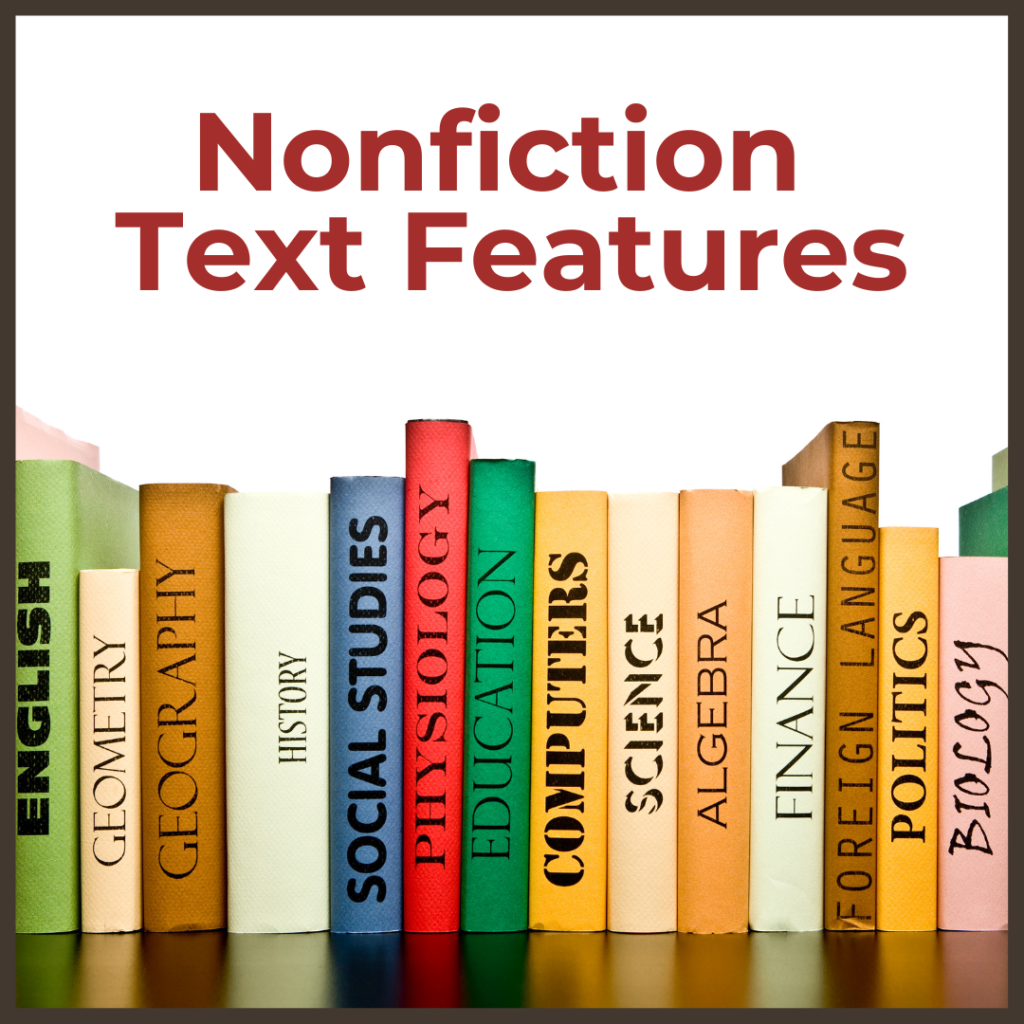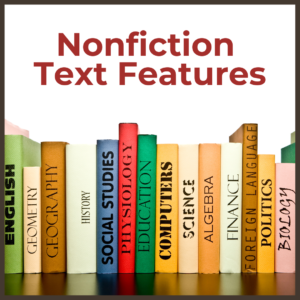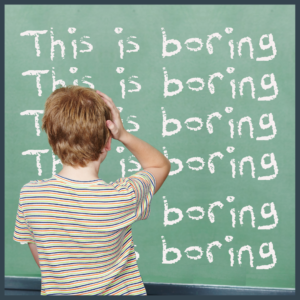Why Nonfiction Text Features Are Helpful
Common nonfiction text features break down complex information, making it easier for students to understand and engage with the material they are reading. These text features act as tools that help readers locate information quickly, understand content, and retain what they’ve learned. They do this by organizing information in texts and clarifying content.
Understanding nonfiction text is a critical skill for young readers. Understanding common text features now will help readers navigate texts today and as they grow.
We know that nonfiction texts become increasingly part of the curriculum as students enter higher grade levels. By middle school and high school, many classes like history, science, and math require students to quickly navigate and comprehend nonfiction text.
Teaching students about common nonfiction text features empowers them to become independent learners, while also enhancing their reading and research skills.
10 Common Text Features
1. Table of Contents

The table of contents is a roadmap of the book, listing the major parts and chapters along with their page numbers.
It helps students navigate large texts, giving them an overview of what to expect and allowing them to quickly find the sections most relevant to their needs.
2. Index
Found at the back of the book, the index is an alphabetical list of names, subjects, and ideas along with the pages where they can be found. Teaching students how to use the index can significantly speed up their research process and encourage more effective information retrieval.
3. Glossary
A glossary lists and defines key terms found in the text. It’s a fantastic resource for building vocabulary and ensuring that students understand the specific language of a subject area. Encourage students to reference the glossary when they come across unfamiliar terms.
4. Headings and Subheadings
Headings and subheadings organize content into sections and subsections, making the text more readable and helping readers identify the main topics at a glance. They act as signposts, guiding readers through the text and highlighting the structure of the information presented.
5. Captions
Captions are brief explanations or descriptions accompanying illustrations or photographs. They help students understand the significance of the visuals in the context of the text. Encourage students to always read captions as they often contain important information that enhances the main text.
6. Illustrations
Illustrations, including photographs and drawings, supplement the text, providing visual examples that aid comprehension. They can make abstract concepts more concrete and accessible for readers. Teach students to use illustrations as a tool to better understand and remember what they’ve read.
7. Charts & Graphs

Charts and graphs present data in a visual format, making complex information easier to understand.
They can illustrate trends, compare data, or show relationships between information. Helping students interpret charts and graphs will enhance their ability to analyze and synthesize information.
8. Textboxes
Textboxes contain additional information that’s related to but separate from the main text. They often highlight interesting facts, offer explanations, or provide examples. Textboxes can spark curiosity and deepen students’ understanding of the topic.
9. Bold Words
Words printed in bold indicate they’re important, often signaling that they’re defined in the glossary or are key concepts within the text. Teaching students to take note of bold words helps them focus on essential information and can improve their ability to pick out main ideas.
10. Bullets and Numbering
Bullets and numbering organize information into an easy-to-read format, which can be particularly useful for listing examples, steps in a process, or important points. They help readers understand sequence and categorization, essential skills for information processing.
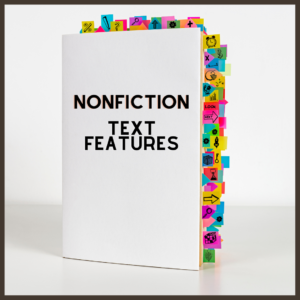
Think about how common nonfiction text features help you when you read something like this article. Wasn’t it easier to read, comprehend, and navigate this article because of the headings, subheadings, and numbering?
By introducing students to these features and teaching them how to use them, we equip our students not just to read nonfiction texts but to interact with them, extract information, and deepen their understanding.
Ideas for Teaching Common Nonfiction Text Features
Now, as helpful as common nonfiction text features are, if we’re being honest, they can also be kind of boring. I don’t know how many kids are going to shout “YES!” or give a silent fist pump when a teacher announces nonfiction text features as the topic.
But there are some ways to make learning about common nonfiction text features more fun! You can check out my article Teaching Nonfiction Text Features – Why and 5 Fun Ideas How for some ideas.
Also, my go-to, easily implemented solution for teaching and reviewing common nonfiction text features is this freebie: Free Nonfiction Text Feature Scavenger Hunt
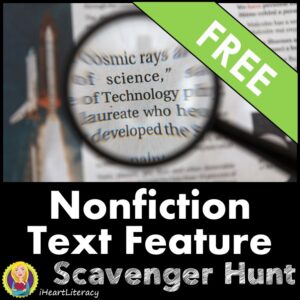
I’d love to hear your ideas! Drop a comment below to let me know how you tackle nonfiction text features in your classroom.


